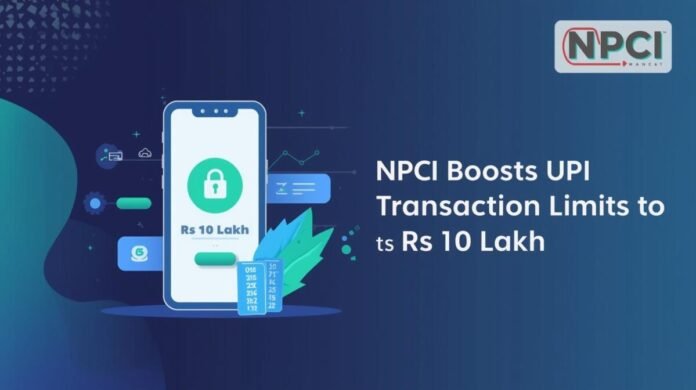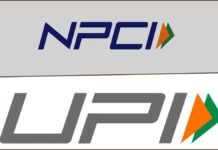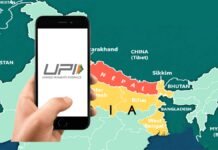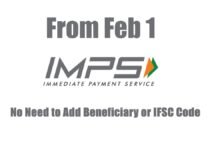
Key Points
- NPCI increases person-to-merchant (P2M) UPI transaction limit to Rs 10 lakh effective September 15, 2025
- Stock market investments and insurance premium payments now allowed up to Rs 5 lakh per transaction (increased from Rs 2 lakh)
- Jewelry purchases through UPI doubled to Rs 2 lakh per transaction with Rs 6 lakh daily limit
- Credit card bill payments, loan EMIs, and government marketplace transactions get Rs 5 lakh per transaction limit
- No additional charges imposed for higher transaction limits across all categories
- P2P (person-to-person) payments remain capped at Rs 1 lakh per day
- Changes specifically target high-value commercial sectors facing previous limit constraints
New Delhi: The National Payments Corporation of India (NPCI) has implemented a significant overhaul of UPI transaction limits starting Monday, September 15, 2025, marking one of the most substantial expansions in digital payment capabilities since UPI’s inception. The new framework increases the person-to-merchant (P2M) transaction ceiling to Rs 10 lakh, representing a major leap forward in India’s digital payment infrastructure.
This comprehensive revision addresses long-standing concerns from various sectors including capital markets, insurance, jewelry, and government procurement, where professionals and businesses frequently encountered operational hurdles due to restrictive payment limits. The timing of this announcement aligns with the government’s broader push toward a cashless economy and enhanced financial inclusion.
Detailed Breakdown of New Transaction Limits
Capital Markets and Insurance Sector
The financial services sector receives the most significant boost under the new framework. Stock market investments, mutual fund purchases, and insurance premium payments now accommodate transactions up to Rs 5 lakh per transaction, more than doubling the previous Rs 2 lakh ceiling.
This change particularly benefits retail investors and insurance buyers who previously required multiple transactions or alternative payment methods for larger investments. Systematic Investment Plan (SIP) investors, insurance policy renewals, and equity market participants can now execute substantial transactions seamlessly through their preferred UPI applications.
The daily aggregate limit for these categories has been set at Rs 10 lakh, allowing investors to spread their transactions throughout the day while maintaining substantial purchasing power for portfolio management and policy payments.
Credit Card and Loan Management
Credit card bill payments have received equal treatment with the Rs 5 lakh per transaction limit, though the daily ceiling remains at Rs 6 lakh. This adjustment addresses the growing credit card adoption among high-net-worth individuals and business executives who often carry substantial monthly balances.
Loan EMI payments now support up to Rs 5 lakh per transaction with a Rs 10 lakh daily limit. This change significantly benefits home loan borrowers, business loan recipients, and individuals with substantial EMI obligations who can now consolidate their payments more efficiently.
Jewelry and Luxury Goods
The jewelry sector, traditionally cash-intensive, receives targeted support with transaction limits doubling from Rs 1 lakh to Rs 2 lakh per transaction. The daily limit has been enhanced to Rs 6 lakh, acknowledging the sector’s digital transformation efforts and consumer preferences for traceable, digital payments.
This change particularly impacts wedding season purchases, festival buying, and investment-grade jewelry transactions, where customers frequently exceeded previous limits and resorted to cash payments or multiple smaller transactions.
Government and Banking Services
Government e-marketplace (GeM) transactions now support Rs 5 lakh per transaction, facilitating smoother procurement processes for government departments and authorized vendors. This enhancement streamlines administrative efficiency and promotes transparency in government purchasing.
Banking services, particularly term deposits and fixed deposit investments, can now process up to Rs 5 lakh per transaction through digital onboarding channels. This change supports the banking sector’s digitization initiatives and provides customers with seamless investment options.
Strategic Impact on Different Sectors
Retail and E-commerce Revolution
The expanded limits position UPI as a viable payment method for high-value retail transactions, potentially reducing dependence on traditional banking channels for substantial purchases. E-commerce platforms specializing in electronics, appliances, and luxury goods can now accommodate UPI payments for premium products without transaction splitting.
Online travel booking, particularly for luxury vacations, business class flights, and extended international trips, benefits significantly from the enhanced travel category limits. Tour operators and travel agencies can now offer UPI as a preferred payment method for comprehensive travel packages.
Business-to-Business Applications
While the changes primarily target P2M transactions, the indirect impact on B2B operations is substantial. Small and medium enterprises (SMEs) can now receive larger customer payments through UPI, improving cash flow management and reducing collection complexities.
Professional service providers including chartered accountants, legal consultants, and healthcare specialists can now accommodate substantial fee payments through UPI, eliminating the need for alternative payment arrangements.
Technology Infrastructure and Security
Enhanced Security Protocols
NPCI has simultaneously strengthened security frameworks to accommodate higher transaction values. Advanced fraud detection algorithms, enhanced encryption protocols, and real-time monitoring systems have been deployed to protect users engaging in substantial transactions.
Two-factor authentication requirements remain stringent for all high-value transactions, while additional verification layers activate automatically for transactions exceeding specified thresholds within each category.
Bank Readiness and Integration
Major banks including State Bank of India, HDFC Bank, ICICI Bank, and Axis Bank have confirmed their readiness to support the enhanced limits. Backend systems have been upgraded to handle increased transaction volumes and values without compromising processing speed or reliability.
Fintech companies and payment service providers have updated their applications to reflect the new limits, ensuring seamless user experience across all UPI-enabled platforms.
Economic and Policy Implications
Digital Economy Acceleration
The limit enhancement represents a strategic move toward reducing India’s cash economy dependency. By accommodating high-value digital transactions, the policy supports the government’s vision of comprehensive financial digitization and improved tax compliance through traceable payments.
Economic analysts project that the changes could increase UPI transaction values by 25-30% within the first quarter of implementation, particularly benefiting sectors previously constrained by payment limitations.
Consumer Behavior Evolution
Market research indicates that consumers often abandon high-value online purchases when confronted with payment splitting requirements or alternative payment method mandates. The enhanced limits address this friction point, potentially increasing conversion rates across multiple sectors.
The psychological impact of simplified high-value payments may encourage consumers to consider UPI for transactions they previously reserved for cash or traditional banking channels.
Implementation Timeline and User Guidelines
Immediate Effect and Bank Coordination
The changes took effect immediately on September 15, 2025, across all UPI-enabled applications and participating banks. Users may need to update their UPI applications to access enhanced limit features, though most major platforms have already implemented the necessary changes.
NPCI has issued detailed guidelines to banks and payment service providers regarding transaction monitoring, reporting requirements, and customer communication protocols for the enhanced limits.
User Education and Awareness
A comprehensive awareness campaign highlighting the new limits and their applications across different sectors has been initiated. Digital payment education programs specifically targeting high-value transaction users are being implemented through banking channels and fintech partnerships.
Users are advised to verify their individual bank limits, as some financial institutions may maintain internal restrictions below the NPCI maximum limits based on customer profiles and risk assessments.

















































